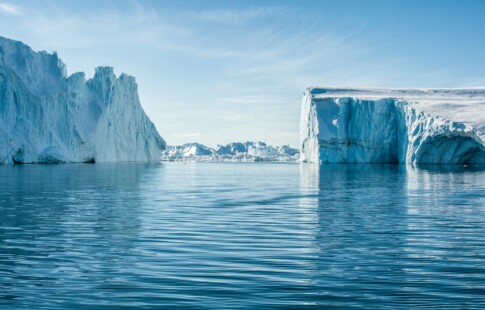
The History of Ocean Pollution and Where It’s Headed
We are reader-supported. When you buy through links on our site, we may earn affiliate commission.
Our oceans amass more than 70% of the Earth’s surface – and for years, they’ve served as landfills. Before experts started to analyze these practices, many people believed these waterways could hold an unlimited amount of waste. Unfortunately, extensive research shows that’s not the case whatsoever.
Within the past few decades, we’ve come to know that our previous actions have caused immense damage. Still, what’s next for ocean pollution? Take a look.
A Look at Prior Disposal Methods
Today, most communities around the world benefit from waste management systems. After a garbage truck picks up your trash, it moves it to a transport station. There, workers and machines sort it into various categories based on type. For the most part, your disposables head to landfills or plants. Other objects, like plastic and cardboard, end up at recycling centers.
In the past, however, there wasn’t a cohesive collection method. Garbage would flood the streets and infiltrate local rivers, and many individuals had to burn or bury items. As a result, a lot of trash made its way to the oceans – or into our atmosphere. Of course, the world’s population hadn’t yet reached 7.5 billion people, so the amount of waste wasn’t extraordinaryThat fact changed when experts discovered the first plastics at the end of the 1800s. At the same time, garbage collection became more prominent throughout the world. Still, millions of people continued to exercise poor disposal methods. Although individuals started to adopt new practices, litter continues to be a massive problem to this day. As such, the history of ocean pollution extends beyond earlier centuries.
The First Reports of Ocean Dumping
Because scientists didn’t attempt to research this issue until the 1960s, we can assume that it’s a centuries-old concern. That’s especially true when we compare evidence to information about previous disposal methods. As a process, organizations used to dump harmful products into our oceans as a way to remove them.
In 1968, the National Academy of Sciences found that more than 100 million tons of waste had entered our oceans. These statistics didn’t consider plastic, which had only recently become a mainstream material. Additional reports estimated other substantial figures related to chemical, industrial and sewage waste. Luckily, four years later, the U.S. Congress enacted the Marine Protection, Research and Sanctuaries Act.
This effort acknowledged that the U.S. must regulate ocean dumping as it affects both people and wildlife. However, even though the government recognized these adverse influences, it hasn’t put a stop to pollution by any means.
Our Problem With Plastic
Although we’re no longer allowed to dump waste into the ocean legally, it still ends up there.
For the most part, we can attribute the planet’s pollution issues to plastic. Each year, companies produce millions of containers and bottles for business and consumer use. Although we’ve implemented ways to reuse and recycle these objects, they continue to wash up on shorelines. How does that happen despite our efforts? There are two significant issues at play.
A Lack of Awareness
While you may worry about ocean pollution, many others don’t share that concern. For instance, after a day at the park, a family leaves behind their plastic soda bottles. Then, the wind blows those containers into a nearby river. Eventually, they float to the ocean. Variations of this example happen consistently. That said, it’s not always an individual problem.
When local officials aren’t bothered by plastic pollution, they don’t implement necessary legislation. Additionally, hundreds of major companies continue to churn out single-use plastics, even though they acknowledge its detrimental effects. While several people continue to try to raise awareness, such as Ben Lecomte and his 5,530-mile ocean swim, it’s a lost cause if we don’t come together to make a change.
How It’s Made
Over time, plastic doesn’t decompose. Instead, it breaks down into tiny pieces, otherwise known as microplastics. These bits cause enormous issues for marine wildlife, as they continuously mistake them for food. Plus, it’s incredibly difficult for experts to track these small particles. Though there’s an effort to produce new items with old plastic, it’s not substantial enough to make a tremendous impact.
As long as we continue to use plastic, we’ll face many consequences.
An Effort to Eliminate Ocean Pollution
As soon as dire reports started to surface about ocean pollution, global organizations and activists turned their attention to the issue. If everyone follows suit, we’ll be able to create a cleaner, healthier environment.
The first step starts with education. Because there’s a massive lack of knowledge, people need to know about problems before they attempt to find solutions. When we’re informed, we’re unstoppable. Other significant efforts need to happen through large corporations. Even if each individual refused to buy single-use plastic products, it wouldn’t help unless businesses did, too.
Ideally, citizens, manufacturers and governments can come together to stop ocean pollution. In the meantime, however, you can make a massive difference. Choose reusable materials when possible – and skip out on plastic once and for all.
There’s a Long Road Ahead for Clean Oceans
The history of ocean pollution can help us understand what we need to do as we move forward. If we’re able to learn from past mistakes, we can transform our situation for the better.
Share on
Like what you read? Join other Environment.co readers!
Get the latest updates on our planet by subscribing to the Environment.co newsletter!
About the author
Jane Marsh
Starting from an early age, Jane Marsh loved all animals and became a budding environmentalist. Now, Jane works as the Editor-in-Chief of Environment.co where she covers topics related to climate policy, renewable energy, the food industry, and more.





